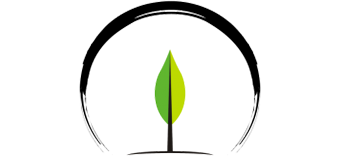– What is acupuncture?
Acupuncture is believed to have originated in China between 3,500 and 8,000 years ago. It is used to promote health and alleviate pain and suffering. A practitioner of East Asian medicine views health and sickness from the standpoints of “vital energy” or “qi” and “energetic balance”. An acupuncturist influences the body’s health by stimulating certain areas along channel pathways or “meridians”. Traditionally, fine, slender needles are used to stimulate specific areas along the meridians called “acupoints”.
– How does it work?
Western science is still unsure about how acupuncture works, but here are some of the current theories:
- Acupuncture directly affects connective tissue which links everything in the body together
- Acupuncture stimulates the release of pain-relieving endorphins
- Acupuncture influences the release of neurotransmitters, substances that transmit nerve impulses to the brain
- Acupuncture influences the autonomic nervous system
- Acupuncture stimulates circulation
- Acupuncture influences the electrical currents of the body
- Acupuncture influences the body’s qi energy
– Does it hurt?
As a very needle sensitive person myself, the answer depends on at least two factors – the practitioner and the patient. Acupuncture needles are very thin filiform needles (several can fit into the hole of a standard hypodermic needle) usually made of surgical grade stainless steel, so insertion usually causes very little discomfort. Some patients will feel a quick, sharp pain that quickly dissipates. For very sensitive patients a superficial needling technique is used where the skin is not pierced at all.
– What should I expect at an appointment?
Initial visits are usually an hour long; follow up appointments are also one hour. Appointments begin with a short intake. The patient’s health history and lifestyle is discussed and his or her chief complaint is addressed. Some time is spent assessing the shape and color of the patient’s tongue, the strength and quality of the arterial pulses, and palpating different areas of the body.
At the start of a treatment, the patient’s pulses are balanced, and a treatment plan is created. The placement of needles is based on palpation of the patient’s tissues, and on the patient’s constitution and chief complaint. Every treatment is customized for the individual and his or her specific health concern. Most of the points used will be from the elbows and knees down, on the back and abdomen, and on the ears. Depending on the patient, as few as 4 needles might be inserted and retained, cupping and other Oriental medical techniques as well as Western medicinal techniques might be employed.
– Is it safe?
Yes. The U.S. Food and Drug Administration regulates the use of acupuncture needles, requiring that needles be manufactured and labeled according to certain high standards. Acupuncture needles are required to be sterile, nontoxic, and labeled for single use by qualified practitioners only. All needles are disposed of after each use.
Clean Needle Technique (CNT) is trained and overseen by the Council of Colleges of Acupuncture and Oriental Medicine (CCAOM), and records of every certified acupuncturists are kept on file.
When performed by a properly trained and licensed practitioner, acupuncture is safe and effective, free from adverse or addictive side effects. Commonly, a sense of relaxation and well-being come about during and after treatments. Some people even fall asleep on the table. Patients receiving therapy for one weakness, may see other imbalances resolving as well.
– How much does it cost?
– How many treatments will I need? How frequently will I need to visit?
A common treatment plan takes between 3 and 12 treatments spaced out over time. Usually a patient will get better more quickly by coming in to the office more frequently at first, but results can be expected from weekly or bimonthly appointments as well. Often results can be seen after only a visit or two.
After a treatment some people will feel relaxed and grounded while other will feel more energized and vibrant. If your symptoms don’t begin to improve within a few weeks, acupuncture may not be the right treatment for you.
– How many needles do you use in a typical treatment?
Treatments vary based upon the condition and the style of acupuncture used. The art and complexity of acupuncture is that there is often more than one way to approach a treatment. A typical treatment can range from as few as 2 needles to as many as 12 or more.
– What type of clothing should I wear for my first visit?
Wear something comfortable if possible (sweatpants, T-shirt, shorts, etc.) for your visit. Also try to refrain from eating or drinking anything that could stain your tongue before your visit.
– How do I prepare for my treatment?
Do your best to arrive on time or a little early to make your entire experience is a soothing one.
It is best to have a light meal prior to your appointment.
– How can I get the greatest benefits from acupuncture?
To achieve the greatest possible benefits, it is important to follow a consistent treatment plan developed specifically for you and with you. The treatment plan will be outlined during your first visit and refined as your response to care is monitored.
Although positive effects of acupuncture can begin immediately after your first visit, acupuncture is a therapy and consistent treatments make healing happen more quickly. Your treatment plan will be designed in such a way that treatments occur more frequently at the beginning of your therapy and once symptoms decrease, the treatments can become more infrequent.
– Where can I get more information regarding the benefits of acupuncture?
Click here to visit the acupuncture page on the World Health Organization’s website.
